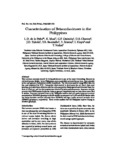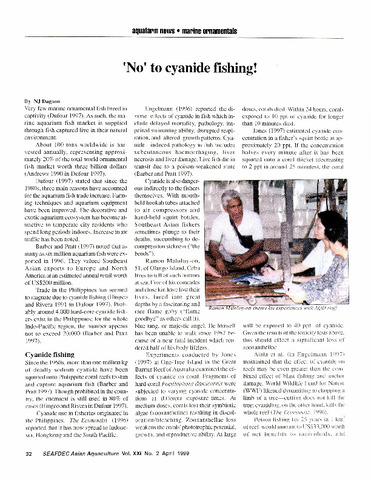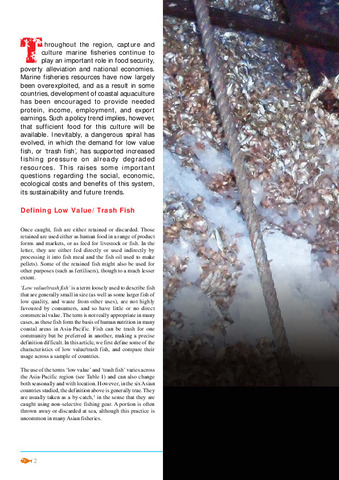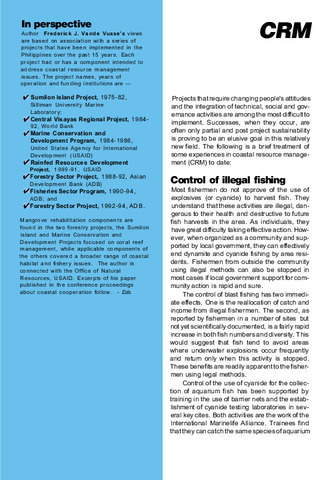Characterization of betanodaviruses in the Philippines
Share
Abstract
Viral nervous necrosis caused by betanodaviruses is one of the most devastating diseases in cultured marine finfish. In the Philippines, mass mortalities occurred in sea bass, Lates calcarifer larvae and grouper, Epinephelus coioides broodstock. The virus was isolated using SSN-1 fish cell line and confirmed by PCR. Cytopathic effect started to develop in the cell line 2 days post infection (p.i) with tissue filtrates until the cells completely disintegrated and detached from the flask at 5 days p.i. and the viral protein was detected by immunofluorescence. Sequence analysis revealed that VNN isolated from the brain of grouper broodstock and sea bass larvae were 98.6% similar. Sequence analysis between the Philippine isolates and red-spotted grouper nervous necrosis virus (RGNNV) genotype is 96.9% similar as compared to 72.0% and 64.0% similar with the barfin flounder nervous necrosis virus (BFNNV) and tiger puffer nervous necrosis virus (TPNNV) genotypes, respectively. These results confirm that the Philippine isolates belong to RGNNV genotype.
Suggested Citation
de la Peña, L. D., Mori, K., Quinitio, G. F., Chavez, D. S., Toledo, J. D., Suarnaba, V. S., Maeno, Y., Kiryu, I., & Nakai, T. (2008). Characterization of betanodaviruses in the Philippines. Bulletin of the European Association of Fish Pathologists , 28(6), 230-237. http://hdl.handle.net/10862/2076
Subject
catadromous fishes; brain; immunofluorescence; genotypes; fish larvae; nucleotides; marine fish; nervous system; viral diseases; RNA; necrosis; polymerase chain reaction; mariculture; breeding stock; fish culture; Dicentrarchus labrax; Pleuronectiformes; Lates calcarifer; Epinephelus coioides; Philippines, Panay I., Iloilo
Taxonomic term
Collections
- AQD Journal Articles [1249]
Related items
Showing items related by title, author, creator and subject.
-
'No' to cyanide fishing!
Dagoon, N. J. (Aquaculture Department, Southeast Asian Fisheries Development Center, 1999) -
Prized commodity: Low value/trash fish from marine fisheries in the Asia-pacific region
Staples, Derek; Funge-Smith, Simon (Secretariat, Southeast Asian Fisheries Development Center, 2005)The use of the terms 'low value' and 'trash fish' varies across the Asia-Pacific region and can also change both seasonally and with location. This article defines low value/trash fish as 'Fish that have a low commercial ... -
CRM in the Philippines: Lessons learned
Southeast Asian Fisheries Development Center, Aquaculture Department (Aquaculture Department, Southeast Asian Fisheries Development Center, 1996)Philippine coastal communities can become capable fishery resource managers and that their management practices can become largely self-sustaining if the project approach focuses on assisting fishermen to learn how to help ...




